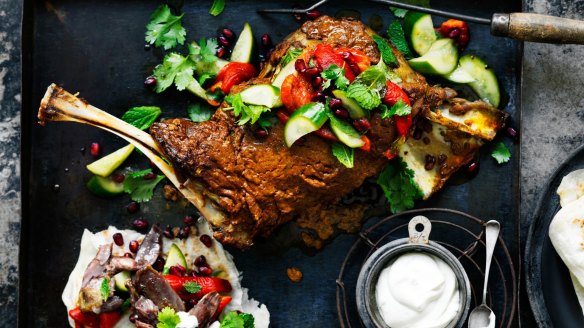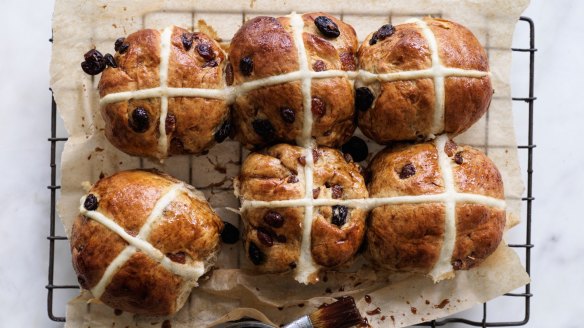How to cook roast lamb so the meat is tender

Last Easter our roast lamb was quite tough. How can I get my Easter lamb succulent this year? G. Hallet
Christians eat lamb on Easter Sunday in recognition of the resurrection of Jesus, "the lamb of God". This follows the Jewish Passover tradition of eating lamb with bitter herbs and unleavened bread in remembrance of the exodus from Egypt. Passover and Easter are spring festivals in the northern hemisphere.
Domesticated sheep generally drop their lambs in autumn and by spring the lambs are eating grass and flavoursome but still tender. So spring lamb for Easter and Passover makes perfect sense in the northern hemisphere.
But here in the southern hemisphere, the lamb is getting longer in the tooth with stronger flavour and more developed muscle by Easter and Passover.
To make sure your lamb is tender for the autumn table, slow roasting is your best bet.
METHOD
- Choose shoulder for loads of flavour but more fat, or for leaner meat, go the leg.
- Preheat the oven to 220C.
- Place the lamb on a bed of onions and rosemary for flavour and even cooking. Rub with olive oil and sprinkle with salt.
- Roast for 20-30 minutes until the skin begins to brown.
- Remove, pour in a cup of chicken or beef stock, cover with aluminium foil, reduce the heat to 150C, and roast for a further four or five hours or until tender.
- Remove from the oven and set aside in a warm place to rest while you make a sauce or gravy.

My hot cross buns are never as good as the ones in the bakeries. Any advice? K. Lee
For centuries, spices were imported to the West from south-east Asia to show off wealth and status, and to preserve and improve food's flavour.
There are compounds in spices that hinder the growth of some bacteria, moulds and yeasts, which brings us to the irony in making hot cross buns. The best are made with freshly ground spices, which can retard the growth of the yeast, which gives buns their lightness.
You need to nurture the yeast through the bun-making process. First, check the use-by date on the yeast to ensure it's fresh.
Phillippa Grogan, from Phillippa's Bakery, says it's important to ensure the water is the right temperature to encourage the yeast to grow. Cold water straight from the tap will stunt its growth so make sure the water is tepid.
She says that people over-knead their dough. "As you're kneading, it should become sticky, then come away from the bench," she says.
Carefully shape each bun, again not overworking the dough, then place the covered buns on a baking tray and set aside in a warm place to prove (rise).
A plastic supermarket bag makes an ideal cover to keep the draughts out and the warmth in.
If it feels nice and balmy like Port Douglas, the yeast should like it too. Serve warm or toasted and slather with cold butter.
Send your culinary conundrums and ingredient suggestions to brainfood@richardcornish.com.au or Twitter and Insta @foodcornish
Appears in these collections
- More:
- Food
- Brain food
